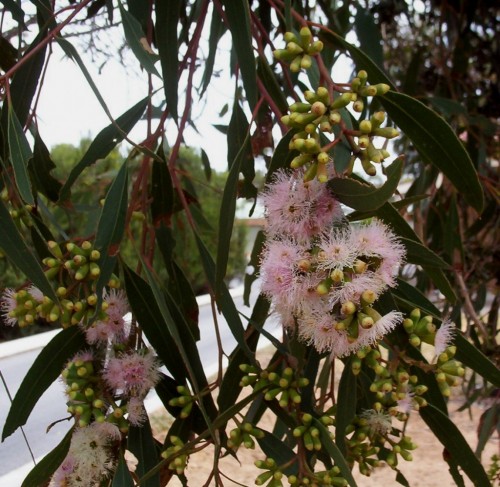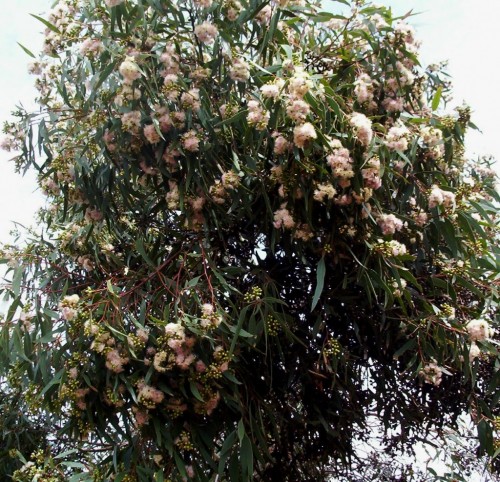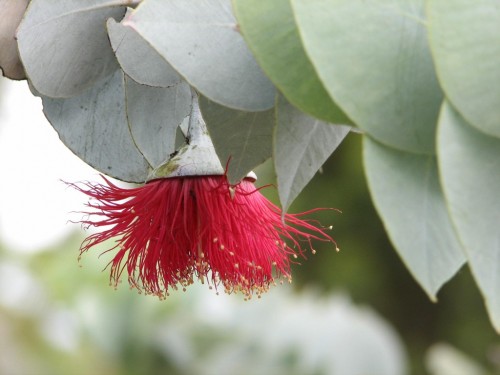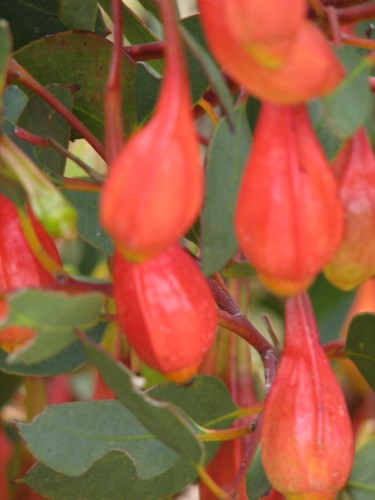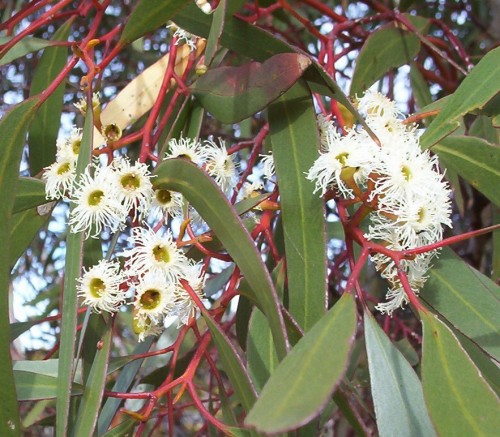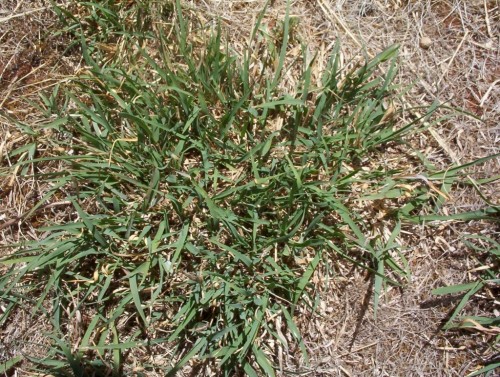Eucalyptus calycogona (Square-fruited Mallee) Pink Form
As we drove in to the Retirement Village last week I saw this lovely mallee growing on the curb. When I got out of the car to take a photo, I realised that it was one of the colour forms of Eucalyptus calycogona, a very hardy small tree which often has a mallee form. The tree usually flowers in the winter- spring period so I was surprised to see the prolific flowering of this one. It is certainly an asset to have summer flowering native plants.
More information about this plant can be found here and here.
Eucalyptus rhodantha (Rose Mallee)
This is a western Australian mallee 2.5-4m high by 3-6m wide. It produces rose red flowers to 7.5cm across. The whole plant is coated in a grey white bloom which really accentuates the colour of the flowers.
It is a plant that requires full sun and a warm climate. The trees can be coppiced once mature and this new growth makes them more useful in a windbreak. This is a rare plant in Western Australia.
Eucalyptus forrestiana (Fuschia Gum)
This tree has attractive gum nuts (capsules) which have the appearance of a fuschia, hence the common name. It is often a tall shrub rather than tree like, being 3-7 metres high by 3-5 metres wide.
It seems to handle the limestone here very well although it is probably in the smaller range so far as size is concerned. It makes a great tree for home gardens. The Honeyeaters love this tree when it is in flower.
Eucalyptus socialis (Red Mallee)
I found this mallee at Lowan Conservation Park when we visited there a couple of months ago. It is a frost hardy and drought tolerant plant.
It is often cultivated because of its ability to grow on a range of sites in dry areas, including shallow limestone. It has a moderate growth rate and flowers at an early age. Its height ranges from 2 to 8 metres. Here it seems to be about 5 metres tall with a lovely wide canopy of foliage, making it a nice shade tree.
Chloris truncata (Windmill Grass) As Lawn
It naturally occurs on sandy and clay soils including disturbed sites such as roadsides, and in grassy woodlands.
Information from the Nativel Grasses Resource Group says that the seed requires a lot of moisture to germinate. It has been seen sprouting while floating on the water in a sheep trough. An easy way to replicate this is to sow the seed in a pot and stand the pot in a container of water deep enough so that the surface of the pot remains very moist. Reduce the water level as the seed germinates.
We had about 3mm rain today. I don’t know how that will affect my experiment mentioned in the last post.
